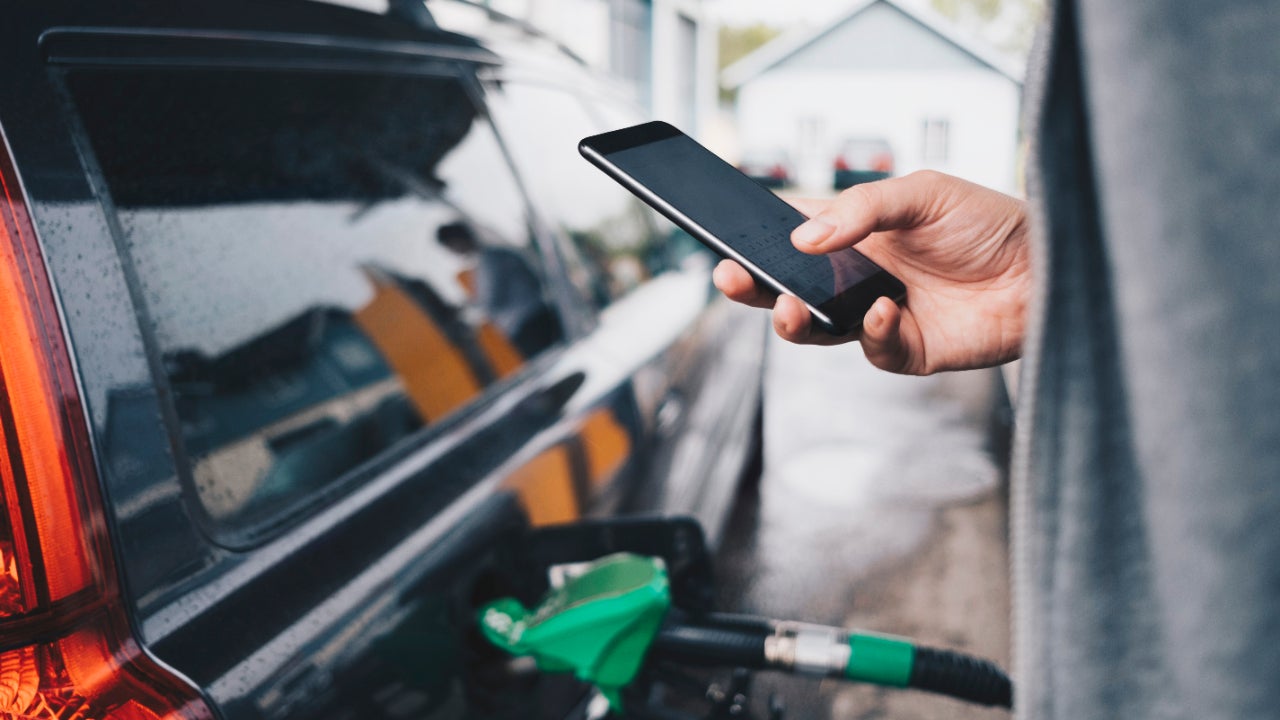Best credit cards after bankruptcy

Picking up a credit card after bankruptcy may seem like a huge risk, but this step could actually help you recover. Having a credit card will allow you to prove your creditworthiness and have all your credit movements reported to the three credit bureaus. With enough positive reporting on your credit reports, you’ll have a shot at moving past bankruptcy and getting a fresh start on your finances.
Unfortunately, card issuers aren’t usually eager to extend a line of credit to individuals with bankruptcy in their recent past. But credit cards for people with bankruptcies do exist if you look hard enough. Cards in this niche tend to be secured credit cards, meaning you’ll have to put down a cash deposit as collateral to get started.
Compare the top cards after bankruptcy
| Card name | Annual fee | Card highlights |
|---|---|---|
| Discover it® Secured Credit Card | $0 | 2 percent cash back at gas stations and restaurants (up to $1,000 in combined purchases each quarter, then 1 percent)1 percent back on all other purchases |
| Capital One Platinum Secured Credit Card | $0 | Automatic account review after six months. After six months, Capital One will automatically evaluate your account to see if you qualify for an increased credit limit.Cardholders can potentially earn back the security depositFraud coverage |
| Chime Credit Builder Secured Visa® Credit Card** | $0 |
Offers perhaps the highest potential credit limit among secured cards with its $10,000 maximum secured account balance (if your account receives qualifying direct deposit)* |
| UNITY Visa Secured Credit Card | $39 | Intro APR on balance transfers: 9.95 percent for the first 6 months (17.99 percent fixed-rate thereafter)Reports activity to three major credit bureaus |
Best credit cards to get after bankruptcy
Discover it® Secured Credit Card
Capital One Platinum Secured Credit Card
Chime Credit Builder Secured Visa® Credit Card
UNITY Visa Secured Credit Card
How to choose the best credit card after bankruptcy
For the most part, you’ll be limited in terms of credit card options after you declare bankruptcy. Most credit cards you’ll be able to qualify for will be secured credit cards, meaning you’ll have to put down a cash deposit to get started.
However, credit cards for bad credit don’t have to be forever. The purpose of a post-bankruptcy credit card is to allow you to prove your creditworthiness once again. Eventually, you should be able to improve your credit score and upgrade to a credit card with better perks and rewards.
As you consider all the card options available to you right now, here are the main factors you should weigh and compare:
- How much can you afford for an initial deposit? Some secured credit cards require a higher initial deposit than others. Make sure you consider how much you can afford to put down as collateral, then compare cards that offer reasonable initial deposit requirements.
- Do you want to earn rewards? Some secured credit cards offer rewards as a percentage of your purchases, but these rewards often entice consumers to spend more than they planned. Our advice? Only sign up for a card that lets you earn rewards if you are certain you can pay your balance in full each month.
- What is the ongoing APR? Know and understand the ongoing APR you’ll be charged if you carry a balance. Also, note that some secured credit cards charge considerably higher interest rates than others.
- What fees will you have to pay? Finally, watch out for annual fees, monthly maintenance fees and other hidden fees that credit cards for bad credit often charge. A card with minimal fees may be best, or better yet, a card with none at all.
Should you get a credit card after bankruptcy?
A credit card can help you rebuild your credit and your finances after bankruptcy. Not only can credit cards make it possible for you to add positive history to your credit reports, they can also help you relearn positive money habits. But you should only take this step if you’re ready to use a credit card like a debit card. That is, only use your credit card for purchases you can afford right away—no financing.
If you’re not ready for the responsibility of open-ended debt, a personal loan is another credit-building option. Instead of a credit line that renews each time you pay down your balance, you’ll be approved for one lump of cash, which you’ll pay back over a set number of months. Read our full comparison to decide between a credit card and a personal loan.
Frequently asked questions
-
The two types of bankruptcy affect your credit differently. Chapter 7 bankruptcy can remain on your credit report for 10 years, whereas a Chapter 13 bankruptcy typically stays on your credit report for 7 years. During this time, it can be difficult (but not impossible) to get approved for a credit card.You’ll have the best shot at getting approved for a credit card after bankruptcy if you spend some time working on improving your credit score before you apply. If you’re able to move the needle and get your FICO score into the “fair” range (580 to 669), for example, lenders and card issuers may be more willing to approve you for their products. Want to see if you pre-qualify without affecting your credit score? Check out our CardMatch tool and get matched with a card that best fits your needs with no impact to your credit score.
-
You can apply for a credit card after your bankruptcy is discharged, but you’ll need to be realistic about the type of credit card you can qualify for. Generally, you’ll have a better shot at getting approved for a credit card for bad credit after a bankruptcy. You may also want to consider a secured credit card that requires a cash deposit as collateral since this card is considerably easier to get approved for.
-
A credit card helps you build credit based on the simple fact all your movements are reported to the credit bureaus—Experian, Equifax and TransUnion. Once you’re approved, you will slowly improve your credit score if you use your credit card responsibly. For example, make sure you pay your credit card bill early or on time each month. In the meantime, strive to keep your credit utilization below 30 percent for the best results. This means maintaining a balance of $3,000 or less for every $10,000 in available credit you have.
The bottom line
Rebuilding your credit after bankruptcy may not be easy, but it is possible. There are cards that can help you rebuild your score over time without costing too much out-of-pocket. Just make sure to use your card responsibly. More than likely, your limit will be low so it’s better to use it more like a debit card: spend only what you know you have and pay it back as soon as possible. After a while, you’ll start to see improvements to your credit score and be able to upgrade to an unsecured card.
*No Minimum Security Deposit: Money added to Credit Builder will be held in a secured account as collateral for your Credit Builder Visa card, which means you can spend up to this amount on your card. This is money you can use to pay off your charges at the end of every month.
**The secured Chime Credit Builder Visa® Credit Card is issued by The Bancorp Bank, N.A. or Stride Bank, N.A., pursuant to a license from Visa U.S.A. Inc. and may be used everywhere Visa credit cards are accepted. Please see the back of your card for its issuing bank.
*No Interest: Out of network ATM withdrawal fees and over the counter advance fees may apply. View The Bancorp agreement or Stride agreement for details; see back of card for issuer. **No Minimum Security Deposit: Money added to Credit Builder will be held in a secured account as collateral for your Credit Builder Visa card, which means you can spend up to this amount on your card. This is money you can use to pay off your charges at the end of every month.
-To apply for Credit Builder, you must have an active Chime® Checking Account. The qualifying direct deposit must be from your employer, payroll provider, gig economy payer, or benefits payer by Automated Clearing House (ACH) deposit OR Original Credit Transaction (OCT). Bank ACH transfers, Pay Anyone transfers, verification or trial deposits from financial institutions, peer to peer transfers from services such as PayPal, Cash App, or Venmo, mobile check deposits, cash deposits, one-time direct deposits, such as tax refunds and other similar transactions, and any deposit to which Chime deems to not be a qualifying direct deposit are not qualifying direct deposits.
*SpotMe is an optional service that provides fee-free overdraft if a member meets certain qualification criteria. Chime SpotMe enables members to draw their Chime Checking Account negative for debit card purchase transactions, ATM withdrawals, cash back transactions or “over the counter” or OTC withdrawals (“Qualifying Transactions”) up to a specified amount (the “Limit”). This Limit is determined by Chime in its sole discretion based on the history of any Chime-branded accounts you have, direct deposit history and direct deposit amounts, spending activity and other risk-based factors.
**Safer Credit Building – On-time payment history may have a positive impact on your credit score. Late payment may negatively impact your credit score. Chime will report your activities to Transunion®, Experian®, and Equifax®. Impact on your credit may vary, as Credit scores are independently determined by credit bureaus based on a number of factors including the financial decisions you make with other financial services organizations.
You may also like

Best gas credit cards for bad credit







